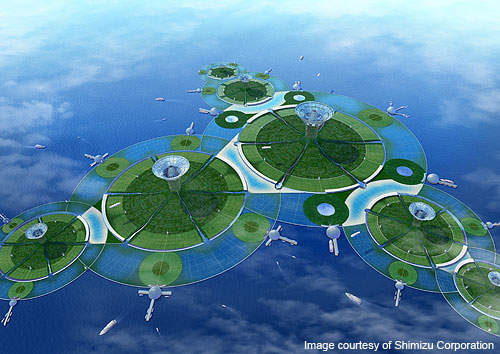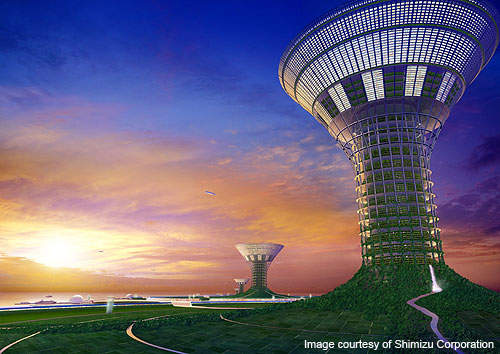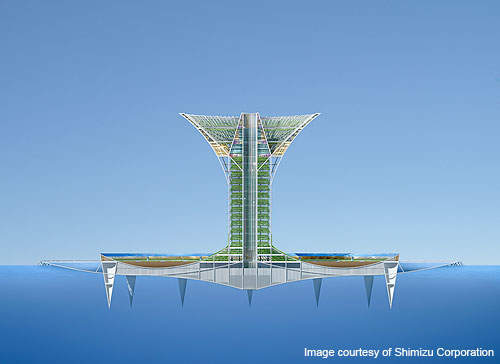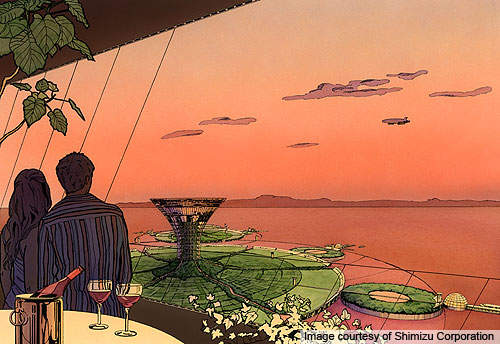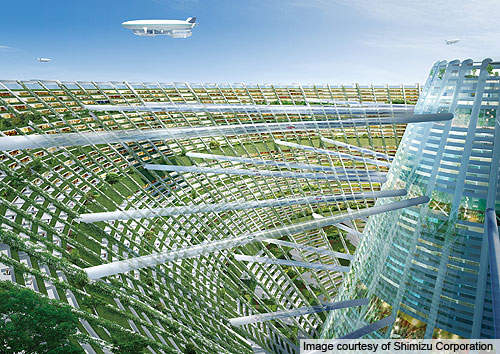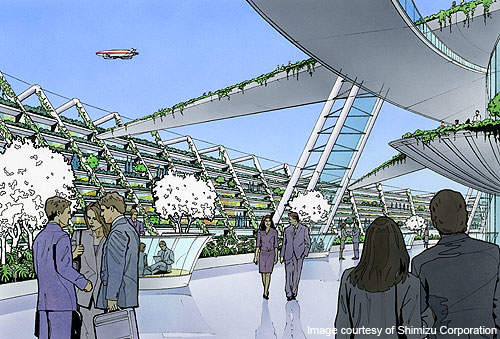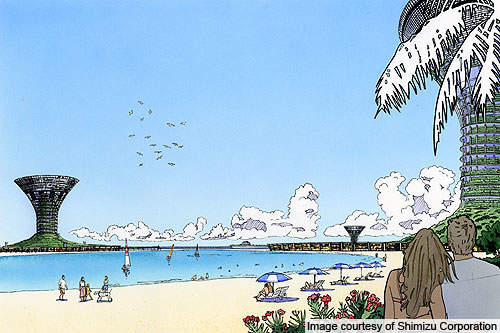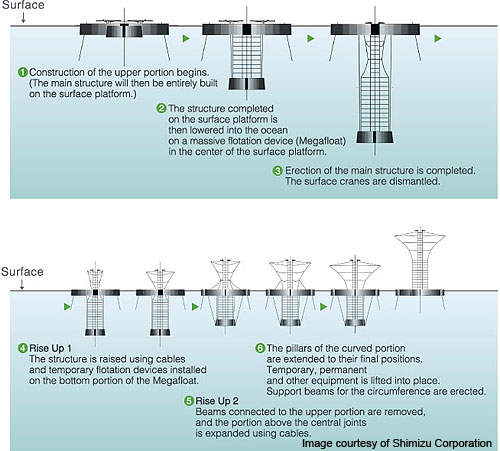Green Float, also known as Botanical City, is a proposed floating city concept developed by Shimizu Corporation of Japan. The futuristic project is envisaged as an environmentally friendly island floating on the waters of the Pacific Ocean in the equatorial region. The city will feature residential space, vegetation factories, and office and commercial spaces.
Construction of the Green Float is planned to begin in 2025. The city is designed like a single plant that aspires to provide the inhabitants with an opportunity to become part of a natural ecosystem.
The concept was announced in 2008. Research on the project was started in 2010. The research is being supported by 14 universities under the Super Collaborative Graduate School project.
The project is expected to attract several engineers, scientists and financiers of Japan. Nomura Securities has agreed to provide financial support for the project in May 2010.
The Green Float design
The project is conceptualised like a lily which floats on the surface of water. A 1,000m walkway radius called cell will become an individual village. These cells will be combined to create cities and thereby countries. The floating cities will be designed for self-sufficiency with their own feed and power resources. It will provide a carbon-neutral habitat for about 50,000 people. A man-made cluster of islands in a ‘lilypad’ formation is planned to accommodate about a million people.
The floating island is designed as an artificial circular island with a diameter of 3,000m and an ultra-high-rise tower. It will be constructed on the equator for abundant natural light and to lower the impact of typhoons. The island will have an approximately 1,000m-high tower and a waterside resort. The residential zone of the tower will house 30,000 inhabitants and the waterside will accommodate 10,000 inhabitants.
The water surface near the equator has a pleasant atmosphere and peaceful environment with a temperature of about 28°C throughout the year. It does not experience strong winds. The compact city will also be an environmentally sustainable, energy conserving development.
Sustainability
The city will be a sustainable development incorporating the latest high-tech environmental technologies. The botanical aspect of the structure aims to achieve a carbon negative rating through the absorption of CO2.
Next generation technologies will be deployed to maintain low fuel consumption and increase thermal insulation. The use of ocean thermal energy, solar, wind and waves will be used to generate clean energy.
Carbon negativity will be achieved by ocean sequestration and recovery of CO2. Edo Period techniques will be implemented for waste recycling and conversion into energy. The ocean and sunlight resources will be used for the achievement of self-sufficiency.
Structure
The 3,000m floating float-over deck base will be built with bonded honeycombs, which comprise of hexagonal cells. These cells will be connected to create an offshore ground structure which will be strong and light. The tower will be built with individual units segmented at every 100m. It will prevent disasters by controlling the spread of fire and damage. A temporary evacuation area will also be provided in each unit.
The equatorial region does not have strong winds. The designers, however, plan to install active control vibration dampers to estimate the wind pressure and its impact on the towers. The strong ocean waves will be countered with very strong elastic membranes installed around the circumference of the island. 30m-high seawalls will also be built to mitigate the water pressures.
The floating island will use all the fundamental safety measures required for a marine structure. Mesh lightning conductors will be installed on the exteriors to counter lightning.
Construction
Smart marine construction techniques will be used for the project. The honeycomb units will be built on wave-resistant barges with concrete plants. They are estimated to weigh about 7,000t and measure about 50m-high and 20m-wide.
The honeycombs will be positioned and made to float by connecting barge equipment to the edges. They will be balanced by injecting water.
Rubber gaskets will be used to bond the individual honeycomb units into square groups. Concrete and studs will be used for stability of the bonds. A 50m-tall floating substructure will become the artificial ground.
The tower framework will be completed above the sea level. It will be, however, temporarily submerged in the ocean. Floors of the tower will be built on the ground level only. It will push the completed levels down into the sea.
When the tower is 1,000m-tall, the entire structure will be raised to full height above the water surface using the buoyancy of water. The surface platform construction will allow continuous, safe and efficient work.
Materials
Shimizu will use light magnesium alloys sourced from the seabed for the tower structures. About 1t of magnesium will be extracted from 770t of sea water. The alloy will have superior strength and be eco-friendly.
Landscaping
The Botanical City will have natural terrestrial forest with both farmland and woodland. The circular base will support vertical cornfields, mangrove and livestock ranch plantations.
The island will feature reservoirs, waterways and grasslands. Activities such as algae harvesting for biodiversity and water purification will be carried out on the coastal circumference waters.

